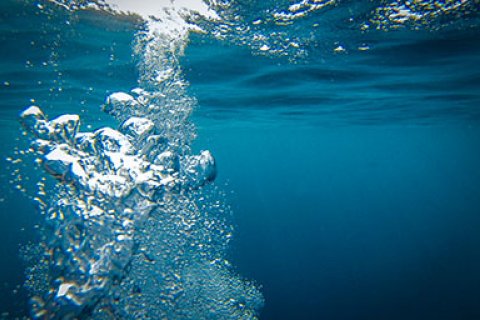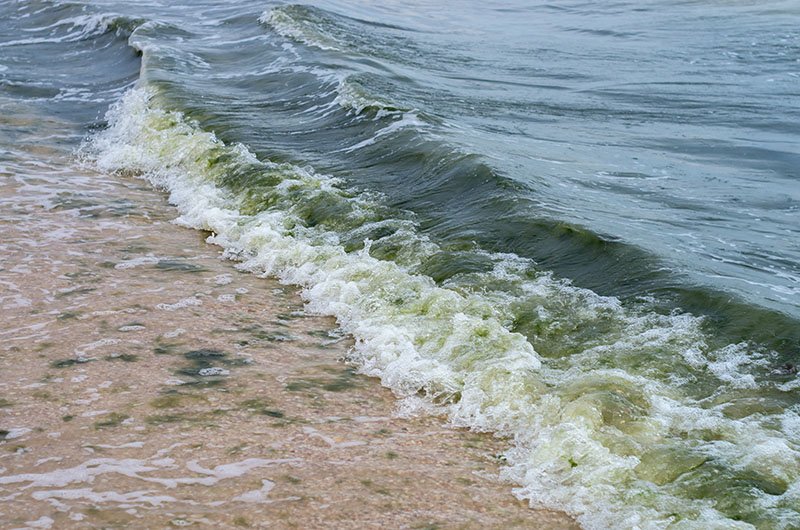More and more dead zones in the oceans
Life in the seas and oceans is not only jeopardised by the plastic soup, but also by a decline in oxygen. Recovery from low oxygen is extremely slow, writes Caroline Slomp, an ocean researcher at Utrecht University.

In the coastal waters near the mouth of the Mississippi river in the Northern Gulf of Mexico, 22,000 square kilometres of the seabed are deprived of oxygen each summer. In this area, half the size of the Netherlands, all mobile life forms near the seabed then disappear. This underwater 'dead zone', where oxygen concentrations in seawater are too low for fish, shells and other sea creatures to survive, develops off the coast each year since 1972.
The situation is even more extreme in the Baltic Sea, where a dead zone of more than 60,000 square kilometres (about twice the size of Belgium) is found at a depth of about seventy metres. The deep water contains high concentrations of toxic hydrogen sulphide. Only microorganisms can survive in it.
The cause of the marine dead zone? Our current lifestyle.
These kinds of marine dead zones, which occur worldwide, are a direct consequence of our current lifestyle. The intensive use of fertilisers in agriculture leads to a gradual 'leakage' of nutrients (such as nitrogen and phosphorus) into our rivers and groundwater – which end up in the sea. Sewage is rich in nutrients as well and, in some countries, drains into the sea unpurified.
Algal blooms
In coastal waters, nitrogen and phosphorus fuel large, often harmful, algal blooms. When the algae die, sink to the seabed and decompose, oxygen is consumed. This oxygen consumption is often so high that the oxygen supply through downward mixing of surface water is insufficient. The deeper water runs out of oxygen, and the further decay of the algae releases hydrogen sulphide - making the situation worse.
Climate change leads to a further deterioration: the warmer the seawater, the less oxygen dissolves in it. Vertical mixing will also become more difficult, because warmer water is lighter than cold water and, therefore, will float on the surface. Increased discharge of river water, which often occurs in warmer climates, can increase the contrast in density between (fresher) surface and (saltier) deeper water. Both changes enhance the vertical stratification of the water that is naturally present and prevent the supply of oxygen to the seafloor.
This causes persistent problems because recovery from low oxygen in coastal areas is often slow. In the case of the Gulf of Mexico dead zone, it has turned out to be particularly difficult to reduce the nutrient loads in the Mississippi river. But even when this is successful, the problem is not necessarily directly solved.
Almost forty years ago, around 1980, similar efforts to reduce the nutrient supply began in the Baltic Sea. But the water quality has hardly improved. This is partly due to the long retention time of nutrients in the sea. Phosphate, for example, disappears by burial in the seabed through a relatively slow process.

Little Ice Age
There is also some good news: with mathematical models, we can study and predict how to make an oxygen-deprived sea oxygen-rich again. In principle, such a recovery is possible, but if a sea becomes much warmer, the time frame for such recovery changes and it may take much longer.
In the Baltic Sea, the seabed shows evidence for several previous periods of oxygen depletion due to natural processes over the past eight thousand years. We know, for example, that there was a period of oxygen depletion in the Baltic Sea around the Middle Ages, which lasted for centuries. The recovery was quick - probably within a few decades - and coincided with a period of cooling: the beginning of the so-called Little Ice Age.
But the situation is far more serious now: climate change is leading to a temperature rise that is faster than before, the oxygen-free zones are larger, and the concentrations of nutrients are higher. Recovery - if it occurs - will take much longer.
The oceans appear infinite and inalterable, but they are not
The Baltic Sea and the Northern Gulf of Mexico are the best-known examples of man-made marine dead zones, but the same processes occur to a greater or lesser extent in coastal areas worldwide. Especially in rapidly developing countries, problems with oxygen depletion are increasing. The fact that, in some places, even a small reduction in oxygen concentration can be fatal for fish and other marine life implies that our oceans are extremely vulnerable.
The oceans appear infinite and inalterable, but they are not. Welcome to the Anthropocene.
Scientists from Utrecht University are reporting in the climate blog of the NRC on their research in the field of sustainability. They are united around the strategic theme of 'Pathways to Sustainability'.
This blog by Caroline Slomp was published on 18 April 2019 on the climate blog of the NRC (in Dutch).
Scientists from Utrecht University are reporting in the climate blog of the NRC on their research in the field of sustainability. They are united around the strategic theme of Pathways to Sustainability.

